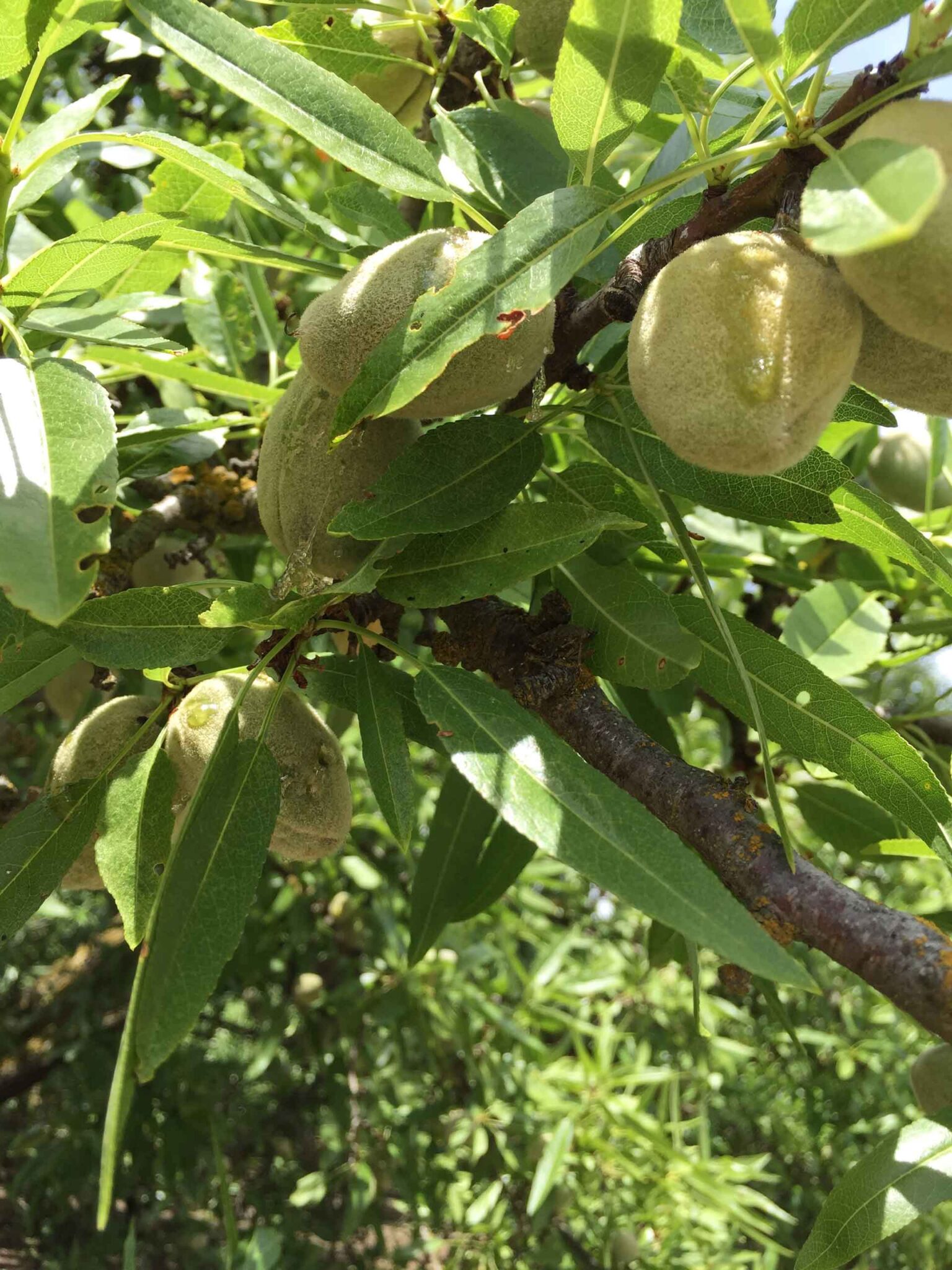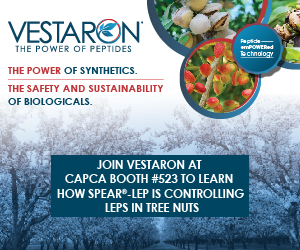
Finding “gummy” nuts on almond trees is a sight no grower or consultant wants to see.
Gummy nuts can be a symptom of many causes of nut damage, from disease, to insects, to nutrient deficiency. Thus, it is necessary, according to former UCCE Advisor Emily Symmes in a Sacramento Valley Orchard Source article, to dissect fruit and take a holistic approach to assessing the orchard and surrounding landscape to determine the cause of damage.

Symmes noted that often, once gummy nuts are observed, the opportunity to mitigate the cause of damage has passed for that season. However, she noted still the importance of finding the cause of symptoms and damage as well as the timing of initial onset for developing improved monitoring and crop protection strategies.
Diseases are a common cause of gumming on almond hulls. Disease history in an orchard, timing of symptom development, affected cultivars and weather patterns, Symmes said, can help differentiate symptom causes. Common pathogen-induced infections that lead to hull gummosis are anthracnose and bacterial spot, she said.
Insects can also cause gumming on hulls. Leaffooted bugs and stink bugs (i.e., “true bugs” with piercing-sucking mouthparts) are generally responsible, Symmes said, but feeding by other “bugs” (e.g., box elder bugs, Phytocoris species, Calocoris species) and Lepidopteran (worm) pests may also cause hull gummosis.
Different symptom levels for insect-induced gummosis depend on length of mouthparts and reachable fruit tissue, she said. Mouthpart length differs by species and growth stage of the insect (i.e., adult or nymph). Reachable fruit tissue by the insect depends on hull thickness and shell hardness, which differ in time and by variety, Symmes said, as well as stage of kernel development during feeding.
Boron deficiency and certain physiological processes can also cause gummy nuts.
Boron deficiency, Symmes said, produces clear gummosis on sides of hulls or at the suture line as well as internal gumming and discoloration of the developing kernel, and fruit drop may occur. Hull samples can be used to evaluate boron status, she said.
Rapid expansion of the growing kernel is a physiological process that can produce hull gummosis. Symmes said that kernels appear healthy upon inspection and affected nuts often remain on the tree without being negatively impacted.















